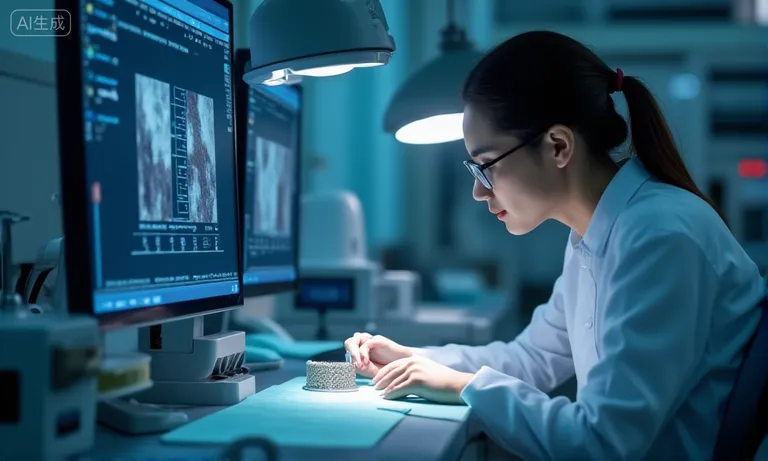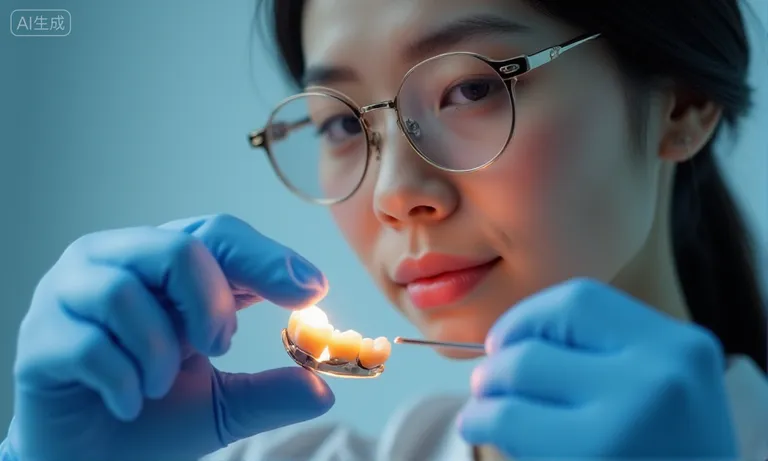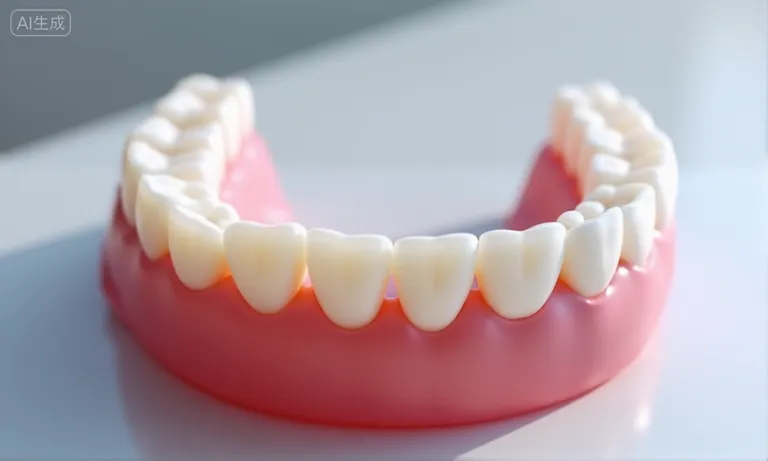How Does Material Choice Affect Delivery Time, Quality, and Collaboration with a Dental Lab?
Material selection plays a decisive role in shaping the delivery speed, consistency, and overall working relationship with a dental laboratory. For procurement teams and dental professionals seeking reliable partners, the choice between zirconia, e.max, PFM, or other materials is not only a clinical decision—it also influences production timelines, remake rates, and communication efficiency.
Key considerations include:
- Delivery Time: Advanced ceramics may require longer fabrication, while digital-ready materials often speed up turnaround. Aligning case details with lab capabilities minimizes delays.
- Quality & Consistency: Each material differs in durability, esthetics, and biocompatibility. Consistent quality and lower remake rates are tied to both material properties and the lab’s quality control standards.
- Collaboration: Material choices directly affect file compatibility, digital workflow integration, and cost transparency. Clear communication with the lab ensures smoother collaboration and fewer errors.
- Long-Term Partnerships: Procurement decisions should weigh how materials support scalability, bulk delivery reliability, and overall ROI. Metrics like turnaround time and remake rate are practical benchmarks for evaluating supplier stability.
By focusing on these factors, decision-makers can ensure that material choices not only meet patient expectations but also strengthen supplier partnerships, reduce operational risks, and enhance long-term value.
Why Are Quality and Durability Critical in Implant Restorations?
The quality and durability of implant restorations are not just technical benchmarks—they are decisive factors in long-term patient satisfaction and procurement cost efficiency. A restoration that performs consistently over time reduces remake frequency, protects patient trust, and safeguards clinic margins. This is why both clinical outcomes and purchasing decisions ultimately hinge on how well materials perform under everyday stress and over years of use.

Dental-lab-implant-restoration-quality-check
How do strength and longevity directly affect long-term cost-effectiveness?
Stronger and longer-lasting restorations translate directly into fewer remakes, reduced chairside adjustments, and lower shipping costs for replacements. From a procurement perspective, every avoided remake prevents hidden costs such as patient dissatisfaction, additional appointments, and logistical delays. In global outsourcing partnerships, the balance between material longevity and predictable supply schedules is one of the most reliable ways to secure long-term savings.
Why do remakes and reliability impact outsourcing decisions?
High remake rates can erode the trust between clinics and their manufacturing partners. For clinics or DSOs, every remake represents wasted production time, disrupted workflows, and increased operational costs. This makes reliability a procurement-critical factor when evaluating overseas dental lab partners. A lab that demonstrates consistent quality control not only reduces logistical friction but also gives procurement teams confidence that large-volume orders will remain on schedule.
What are the clinical vs procurement perspectives on material durability?
From the clinical side, durability means fewer failures, smoother patient outcomes, and predictable case planning. From the procurement side, it represents fewer remakes, better ROI, and the ability to standardize supplier relationships without costly interruptions. Understanding both perspectives helps procurement managers weigh materials like zirconia and PFM not only on technical grounds but also on broader operational and financial impact.
In practice, we have seen that durability discussions often serve as the bridge between clinicians and procurement teams. Both want predictable results, but for slightly different reasons. Overseas dental labs that understand this dual perspective are best positioned to act as reliable partners in long-term implant workflows.
How Does Zirconia Perform in Terms of Reliability and Longevity?
Zirconia is recognized as one of the most reliable materials for implant restorations, offering exceptional fracture resistance, long-term durability, and esthetic stability. Its performance makes it a preferred choice in demanding cases, especially when patients and procurement managers expect predictable outcomes and reduced remake rates.

Zirconia-dental-implant-full-arch-case
What makes zirconia resistant to fracture, wear, and chipping?
Zirconia’s unique crystal structure provides outstanding mechanical strength, making it resistant to cracks and everyday wear. Unlike porcelain, which can chip under high bite forces, zirconia distributes stress evenly across the restoration. This structural toughness is why zirconia restorations maintain function over years of use, even under heavy occlusal load. In procurement terms, fewer fractures mean fewer remakes and lower hidden costs.
Why is zirconia well-suited for full-arch and high-force restorations?
- It withstands chewing forces in posterior and bruxism cases better than most alternatives.
- Its monolithic design avoids layering weaknesses that often lead to chipping in other materials.
- Full-arch restorations benefit from zirconia’s flexural strength, making it a safe option for long-span bridges.
- From a supply-chain view, using zirconia helps clinics standardize complex cases with confidence, knowing the material supports high-demand scenarios.
How do esthetics and biocompatibility strengthen zirconia’s value?
- Esthetics: Zirconia can be shaded to match natural dentition, offering lifelike translucency while avoiding the gray line sometimes seen with PFM at the gum line.
- Biocompatibility: As a metal-free material, zirconia minimizes allergy risk and integrates well with soft tissues.
- Patient trust: A restoration that looks natural and causes no irritation builds confidence in both the clinic and its chosen lab partner.
For clinics and DSOs, zirconia’s blend of strength, esthetics, and tissue-friendliness makes it a strategic material. In our role as an overseas dental lab, we have supported clients with large-volume zirconia cases, where digital workflows ensured both consistency and esthetic precision across batches. This has proven especially valuable for clinics seeking a balance between predictable quality and procurement efficiency.
How Does PFM Perform in Terms of Strength and Reliability?
PFM (porcelain-fused-to-metal) restorations remain a widely used option because of their proven strength and long clinical history. The metal substructure ensures solid support, but porcelain chipping and esthetic compromises can create procurement and clinical challenges. For purchasing teams, PFM often represents a balance between cost control and reliability, though long-term risks must be factored into overall decision-making.

Dental-lab-PFM-restoration-metal-check
How does the metal substructure provide long-term strength?
The metal framework of a PFM offers stability under heavy biting forces and resists catastrophic fractures. This makes PFMs durable in posterior cases where strength is more important than translucency. Many DSOs still consider PFMs a “safe choice” when standardization and predictability matter in procurement.
Why is porcelain chipping the most common reliability issue in PFMs?
Porcelain layered over metal can chip at the veneer-to-framework junction. These chips often occur in areas of high stress or when occlusal adjustment removes critical support. In outsourcing, such failures typically lead to remakes that increase costs and delay patient treatment. Labs with strong QA and proper porcelain application techniques are key to minimizing these risks.
How do cost advantages balance against esthetic and risk limitations?
- PFMs are generally more affordable to produce compared to zirconia, making them attractive for procurement when budgets are tight.
- However, esthetic drawbacks—such as visible metal margins near the gum line—can impact patient satisfaction.
- Chipping risks mean hidden costs can offset upfront savings if remake rates are not tightly controlled.
How do long-term maintenance costs differ between zirconia and PFM?
| Factor | PFM | Zirconia |
|---|---|---|
| Initial cost | Lower | Higher |
| Esthetic stability | Lower (metal line visible over time) | Higher (no metal margin) |
| Common failure | Porcelain chipping | Rare fracture/wear |
| Maintenance frequency | Higher (repairs, remakes) | Lower (stable over time) |
| ROI over 5 years | Often reduced by hidden remake costs | Typically stronger due to fewer failures |
Clinics choosing PFMs must weigh lower upfront costs against higher maintenance exposure. From our perspective as an overseas dental lab, PFMs remain a practical solution for certain cases, but we have seen that close QA monitoring and clear remake policies are essential. By actively controlling porcelain layering and verifying framework design, we help clinics minimize risk while still benefiting from the affordability of PFM restorations.
What Risks and Complications Should Be Considered?
Risks in implant restorations are not only technical issues but procurement concerns that directly affect cost, scheduling, and patient trust. Both zirconia and PFM carry material-specific weaknesses, making risk identification and lab-level quality assurance essential for predictable outcomes.

Dental-lab-implant-restoration-risk-QA
How do chipping, fracture, or metal allergies impact reliability?
- Chipping: PFM restorations are prone to porcelain chipping, creating remakes and hidden costs. Zirconia rarely chips, but in rare cases marginal fractures can occur under extreme force.
- Fracture: Although zirconia is strong, poorly designed frameworks or thin margins may compromise its structural integrity.
- Metal allergies: PFMs carry a small but significant risk of patient hypersensitivity due to nickel or other alloy components, which can influence long-term satisfaction.
Why do material-specific weaknesses influence procurement risk?
Procurement managers weigh these weaknesses not only in clinical terms but also in terms of supply chain reliability. For example, a high remake rate from porcelain chipping affects both delivery schedules and overall ROI. Zirconia’s lower risk profile supports procurement consistency, but requires careful CAD/CAM design to avoid framework fractures. Ultimately, procurement risk management is about balancing cost savings against predictable delivery and reduced remake exposure.
What role does lab QA play in minimizing these risks?
- Incoming material verification: Ensuring certified zirconia blanks and safe alloy compositions.
- Digital workflow validation: Using CAD/CAM to check margin thickness and occlusal design before production.
- Layering control: For PFMs, managing porcelain application to prevent stress points that lead to chips.
- Final inspection: Reviewing every restoration under magnification to detect early defects before shipping.
We have observed that clients with the lowest remake rates are those who partner with labs that actively integrate QA into every stage of production. As an overseas dental lab, Raytops Dental Lab incorporates alloy certification, CAD/CAM validation, and layered inspection into routine workflows—helping clinics reduce complications and strengthen trust in their supply chain.
What Are the Direct Quality Differences Between Zirconia and PFM?
When comparing zirconia and PFM, the most direct differences emerge in predictability, esthetic stability, and long-term maintenance costs. Zirconia provides higher reliability with fewer hidden costs, while PFMs are initially cheaper but can create esthetic compromises and remake risks over time.

Zirconia-vs-PFM-dental-restoration-comparison
Which material offers more predictable outcomes for long-term use?
Zirconia restorations typically offer greater predictability because of their monolithic structure, which minimizes the risk of veneer chipping. PFMs, while durable due to their metal core, often introduce variability through porcelain layering. For procurement managers, zirconia’s reliability means fewer remakes and smoother supply planning across multiple cases.
How do esthetic results differ, especially at the gum line?
- Zirconia: Provides natural translucency and seamless blending with gingival tissue. No gray margin is visible, even as gums recede.
- PFM: Over time, the metal framework may appear as a dark line near the gum line, which can affect patient satisfaction.
- Procurement impact: Esthetic predictability reduces remakes and patient complaints, strengthening the clinic’s reputation.
What are the comparative remake rates and hidden costs?
| Factor | Zirconia | PFM |
|---|---|---|
| Common failure | Rare fracture under extreme stress | Porcelain chipping |
| Esthetic risk | Low (stable translucency) | Higher (visible metal margins) |
| Typical remake frequency | Low | Higher, especially in anterior cases |
| Hidden costs | Minimal | Increased lab fees, extra appointments, lost chair time |
| ROI over time | Higher due to stability | Lower when remake costs accumulate |
From our vantage point as a global dental lab, we see zirconia outperforming PFMs in terms of consistent quality and esthetic acceptance. However, PFMs remain relevant where budget constraints dominate. By offering both materials, labs like Raytops Dental Lab help procurement teams weigh cost against long-term predictability, ensuring that clinics choose the option best aligned with their patient needs and financial priorities.
How Can Outsourcing Dental Labs Ensure Reliable Outcomes With Zirconia and PFM?
Outsourcing to a professional dental lab can significantly improve the reliability of both zirconia and PFM restorations by reducing remake rates, ensuring esthetic accuracy, and streamlining procurement workflows. Expertise, digital integration, and strong QA systems are the pillars that transform raw materials into predictable, high-quality outcomes.

Dental-lab-digital-workflow-QA-process
How does lab expertise reduce remake rates for zirconia and PFM?
Experienced labs understand the material-specific weaknesses of both zirconia and PFM. For zirconia, precision in margin design and sintering protocols prevents fractures. For PFMs, correct porcelain layering avoids stress points that lead to chipping. This expertise is often the difference between restorations that need frequent remakes and those that consistently meet clinical and procurement expectations.
Why do digital workflows (CAD/CAM, 3D printing) improve consistency?
- Accuracy: Digital scans and CAD/CAM milling reduce manual variability, ensuring tight fits.
- Reproducibility: Restorations can be replicated with minimal deviation across multiple cases.
- Communication: Shared digital files streamline collaboration between clinics and labs, speeding up adjustments.
- Scalability: High-volume orders can be processed consistently without compromising quality.
How do bulk material sourcing and QA processes enhance reliability?
- Certified material sourcing: Using regulated zirconia blocks and safe alloys ensures consistency from the start.
- Batch-level QA: Inspecting materials and restorations in lots reduces variability.
- Process audits: Step-by-step checks during milling, layering, and finishing catch errors early.
- Final case validation: Every restoration undergoes dimensional and esthetic checks before shipping.
For clinics and procurement managers, outsourcing is not only about shifting workload but about gaining structured reliability. At Raytops Dental Lab, we have seen how digital workflows and disciplined QA transform zirconia and PFM from materials with risks into predictable restorations. By combining expertise, technology, and supply-chain scale, an overseas dental lab partner can help clinics secure both cost-effectiveness and long-term trust.
Conclusion
Choosing between zirconia and PFM restorations ultimately comes down to balancing reliability, esthetics, and long-term cost efficiency. Zirconia provides predictable strength and superior esthetics, while PFMs remain cost-effective but require careful QA to manage risks like porcelain chipping. For clinics and procurement managers, the most decisive factor is not only the material but the consistency of the lab behind it. Partnering with an overseas dental lab that integrates expertise, digital workflows, and strict quality control—such as Raytops Dental Lab—ensures that both zirconia and PFM restorations deliver lasting value, reduced remakes, and dependable outcomes.


